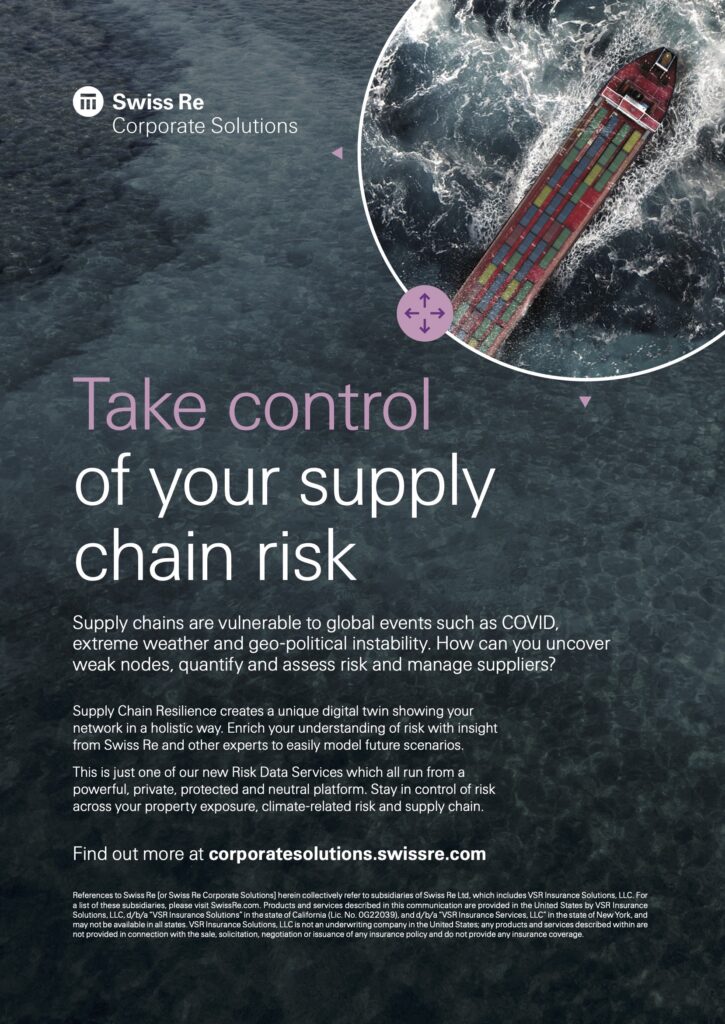Fires on vessels remain one of the biggest safety issues for the shipping industry as evidenced by a significant increase in recent incidents including the Fremantle Highway, a car-carrying vessel that caught fire off the Dutch coast with thousands of vehicles on-board en-route from Germany to Egypt. In this Q&A, Captain Rahul Khanna, Global Head of Marine Risk Consulting at Allianz Commercial, Captain Randall Lund and Captain Anastasios Leonburg, Senior Marine Risk Consultants, highlight some of the factors behind this trend.
Allianz’s Safety and Shipping Review 2023 reports that fire was the second top cause of loss for shipping vessels last year (after foundering) with eight vessels lost and more than 200 incidents reported – the highest for a decade. Why is this happening?

Every year Allianz Commercial analyzes reported shipping losses and incidents involving ships over 100 gross tons in our annual report. And although shipping losses have declined by 65% over the past decade (38 vessels in 2022 compared with over 100 in 2013), unfortunately, fire incidents have not followed. We continue to see major events involving large container ships, car carriers, and ro-ro vessels for example. There were over 200 reported fire incidents during 2022 alone (209) – the highest total for a decade. Meanwhile, 64 ships have been lost to fires in the past five years. AGCS analysis of 250,000 marine insurance industry claims shows fire is also the most expensive cause of loss, accounting for 18% of the value of all claims analyzed.
Catastrophic fires on large vessels typically begin with combustible cargo, which then spreads rapidly and outpaces the firefighting capabilities of the crew. The size and design of large vessels make fire detection and fighting more challenging and once crew are forced to abandon ship, emergency response and salvage operations become more complex and expensive, and the risk of a major or total loss increases. Fires need to be contained quickly, yet it may take several hours to get to the base of a fire on a large vessel.
Misdeclaration of cargo is a real problem. Industry reporting systems attribute around 25% of all serious incidents onboard container ships to mis-declared dangerous goods, such as chemicals, batteries, and charcoal, although many believe this number to be higher. Failure to properly declare, document and pack hazardous cargo can contribute to blazes or hamper firefighting efforts. Labeling a cargo as dangerous is more expensive. Therefore, some companies try to circumvent this by labeling fireworks as toys or lithium-ion batteries (Li-Ion) as computer parts, for example.
Q: There have been several incidents in recent years where Li-Ion batteries have been reported as contributing to fires on vessels. How significantly are they impacting safety on cargo ships?
Li-Ion batteries can be carried on board ships either as cargo themselves or as part of the equipment for the electric vehicles (EVs) they provide power for. Many of these batteries are safely transported every day but fire risks are present in both scenarios, especially if the batteries are used or defective, damaged or improperly stored, packaged, handled or labelled. The main hazards are fire, explosion, and ‘thermal runaway’, a rapid self-heating fire that can cause an explosion. They can also produce irritating, corrosive or poisonous gases that cause an explosion in a confined space. The main causes of Li-Ion fires are substandard manufacturing or damaged battery cells or devices, over-charging, and short circuiting.
Of course, Li-Ion batteries are an important source of energy and do not necessarily burn more frequently than other goods. It is only when they ignite that they are more difficult to extinguish as they can burn more ferociously and are capable of spontaneously reigniting hours or even days after they have been put out. Most ships lack the suitable fire protection, firefighting capabilities, and detection systems to tackle such fires at sea, which has been made more difficult by the dramatic increase in ship size – container-carrying capacity has doubled in the last 20 years. We have seen many fires where malfunctioning or damaged batteries have been attributed as a contributing factor in recent years.

TAKE CONTROL
OF YOUR SUPPLY CHAIN RISK
Supply chains are vulnerable to global events such as COVID, extreme weather and geo-political instability.
How do you uncover weak nodes, quantify and assess risk and manage suppliers?
Supply Chain Resilience creates a unique digital twin showing your network in a holistic way. Enrich your understanding of risk with insight from Swiss Re and other experts to easily model future scenarios.
Q: What role is the demand for green technology playing?
Decarbonization and electrification are increasing the number of shipping goods that contain Li-Ion batteries, from EVs to a wide range of consumer and electronic goods. The global Li-ion battery market is expected to grow by over 30% annually from 2022 to 2030, according to McKinsey. The number of EVs is also growing at a fast pace: Nearly 10% of global car sales were electric in 2021, four times the market share in 2019. A lot of conventional power sources have been replaced by batteries, and that industry has seen huge increases in demand in recent years, a trend that will only continue. These new cargos mean new risks if they are not adequately managed. The explosion of demand for these batteries is flooding the market with new manufacturers, raising some questions around quality control.
Q: Is there anything freight forwarders/carriers/shipping companies can do to improve safety standards with these deliveries? Why have they not been implemented already?
Li-ion fire risks will likely ease over time as manufacturers, carriers, and regulators address the current challenges. In the meantime, attention must be focused on pre-emptive measures to help mitigate the peril.
‘State of Charge’, (SOC), of Li-Ion batteries is an important consideration in their safe transportation and should be around 30%-50%. More towards 30 than 50. Both shipping lines and shippers should ensure this is the case. Shippers should also request proper certification like the test summary from the manufacturers before transporting them as defective manufacturing is a one of the leading causes of fires in such batteries.
Other measures to consider include ensuring staff/crew receive adequate training and access to appropriate firefighting equipment, improving early detection systems and developing hazard control and emergency plans.
Q: How can procurement improve safety standards aboard cargo ships and reduce the impact of improperly stored battery technologies?
As already mentioned, misdeclaration of cargo is a leading cause for fires on container ships and shippers or freight forwarders should ensure goods are properly declared and marked as hazardous if Li-Ion batteries are being shipped.
Several large container shipping companies have turned to technology to address this issue using cargo screening software to detect suspicious bookings and cargo details, while large container operators are imposing penalties. Unified requirements and penalties for misdeclared hazardous cargo would be welcomed.
The debate about EVs in the shipping industry is ongoing, with conversations about whether there is a need for dedicated Ro-ro vessels for EVs. From an insurance perspective, this is something we would like to see – purpose-built vessels for transporting EVs, designed to substantially reduce the risk of fire. We have already seen shipping companies stop transporting EVs on their ships because of the potential fire risk.
What protective measures are possible for EVs in particular?
Allianz has long warned about the risks associated with Li-Ion batteries and EVs in shipping for a number of years, first highlighting this issue in 2017. A recent report highlights a full list of loss prevention measures to consider including:
- All EVs should display clear and precise identification on the windshield detailing the battery type (e.g. Battery Electric Vehicle (BEV), Hybrid Electric Vehicle (HEV), Plug-in Hybrid Electric Vehicle (PHEV).
- EVs with low ground clearance should be clearly labeled as this can present loading and discharging challenges arising from the vessel’s ramps, inner slopes, or deck appendages.
- All EVs with a Li-Ion battery must have successfully passed pressure, temperature, crush, and impact tests as described in the UN Manual of Tests of Criteria – subsection 38.3 for transport of Li-ion batteries.
- All EVs must be fully functional, self-propelled, safe to drive and contain an undamaged battery system.
- There should be no charging of EVs during the passage.
- All EVs must be properly secured to prevent any shifting during transport.
- One potential idea being explored by some car carrier operators, as part of fire-preventative measures, is the use of fire-proof blankets manufactured specifically for EVs.

